We’ve all been there. You’re driving down the highway on a long road trip, in a car packed with either family members or friends, and the mood inside the vehicle turns to hungry.
Your fellow passengers know they need to eat soon, but you’re on a tight schedule; you’ll probably have to stop at a fast food joint.
If you’re trying to eat healthy, this is when panic mode starts to set in. You know you’ve been successfully avoiding the horrible menu options fast food presents by sticking to pre-approved sit-down restaurant choices, or by wisely cooking your own meals at home.
You start feeling guilty before ever taking a bite. Before the choice of where to eat has even been made. You’re going to cheat on your diet, and you’re going to hate yourself for it.
But wait – it doesn’t have to be that way. Believe it or not, it’s possible to still eat relatively healthy while in a hurry. Fast food restaurants do have options that will leave you feeling satiated without feeling sick or sorry.
It might take a little more effort than ordering what looks like the best or cheapest thing on the menu. You may have to count some calories, and you might even have to consult a secondary menu, but if you play your cards right, you can end up doing right by your diet.
Let’s find out how a proper nutritionist goes about ordering fast food, shall we?
The Guidelines
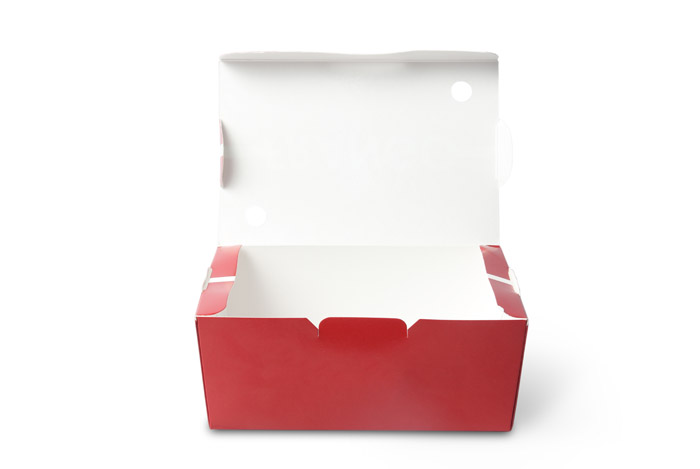 The first thing a nutritionist knows when deciding what to eat from a particularly unwholesome eatery, is to search for nutrition information about the foods available.
The first thing a nutritionist knows when deciding what to eat from a particularly unwholesome eatery, is to search for nutrition information about the foods available.
When trying to stay “healthy” at fast food places, look for food that offers a combination of macronutrients without losing control and going for high calories, sugar, or sodium. Which honestly, is most of the menu.
If you’re grabbing lunch, which I’ll focus on today, here’s what to shoot for:
- Low calories – 500 calories or less. It’ll be tough, but it’s possible. Some fast food chains have food on their menus where the entrée alone contains more than a thousand calories. That’s a recipe for disaster if you’re trying to stay healthy – unless you only want to eat once a day.
- High protein – look for at least 10 grams of protein. If you can find more, awesome. Protein is great for making you feel fuller, while helping you build muscle mass.
- Low sodium – the FDA recommends no more than 2300 milligrams of sodium per day. Often, fast food will include much more than this, even in the healthier, greener options. So aim for the lowest possible sodium you can find.
- Low sugar – try to avoid eating a meal with more than 20 grams of sugar. This can be as simple as not including a soda with your order (please, don’t drink sodas).
- Low carb – if possible. If you’re eating a regular 2000 calorie diet the recommended carb intake is to aim between 250 and 400 carbohydrates a day. Try and order a meal where your total intake will be less than a third of the carbs you plan on consuming. If you’re having a big pasta dinner later tonight (also not recommended if you’re trying to stay healthy), limit your choice to as few carbs as possible.
- No trans fat – none. Trans fats are related to cardiovascular disease, stemming from high “bad” cholesterol, and cancers. Try to find menu options with zero trans fat.
- Limit processed beef – those burger patties are nothing other than processed meat, which has been linked to numerous negative health effects.
- Be careful with condiments – some fast food condiments, like mayonnaise and other oil-based sauces, add lots of fat and calories to your meal. Those that are lower in fat will almost definitely contain sugar and sodium, which is why people tend to rarely eat a fast food meal without slathering it in a condiment of their choice.
- Go for grilled instead of fried – when foods are fried, they tend to absorb a lot of fat. This can be pretty bad for your cholesterol and blood pressure, which can increase risk of stroke, cardiovascular disease, and diabetes.
Additionally, do not order unnecessary sides or sugary drinks. Have an iced water instead.
Also, think about portion control; you do not need the supersize. In fact, you might not even need to eat the whole meal in front of you. Save some for the rest of the ride instead of eating it all at once.
Remember, you don’t have to have the fries. If you do, keep in mind that even a small McDonald’s fry contains 230 calories and 130 milligrams of sodium.
And obviously, avoid dessert!
If you can carefully pick a meal that falls within these parameters, you shouldn’t have to feel guilty about your fast food choice, and you won’t have to make your fellow passengers angry with you when you ask them to find a better option that leads you off the road.
Best Choices at the Worst Offenders
Sometimes it’s harder to find the more specialty fast food restaurants that might have better food options. But it’ll be no problem to stumble across some of the more popular fast food chains in the United States. That means it will be wise to have some idea where to look on the menu before you get there.
So here’s a short list of items you can choose at these chains.
Burger King
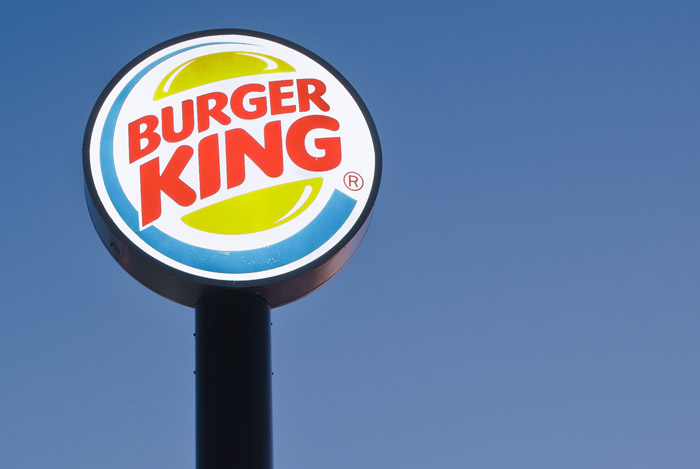
I never would have thought that one of the more infamous fast food chains actually had a vegetarian option. The meat substitute here is a MorningStar Farms Garden Veggie Patty.
This sandwich, and a meal including apple fries and a milk, has only 465 calories, a great 32 grams of protein, 66 grams of carbohydrates, 8 grams of fiber, 1 gram of saturated fat, and a total of 1,180 milligrams of sodium.
McDonalds
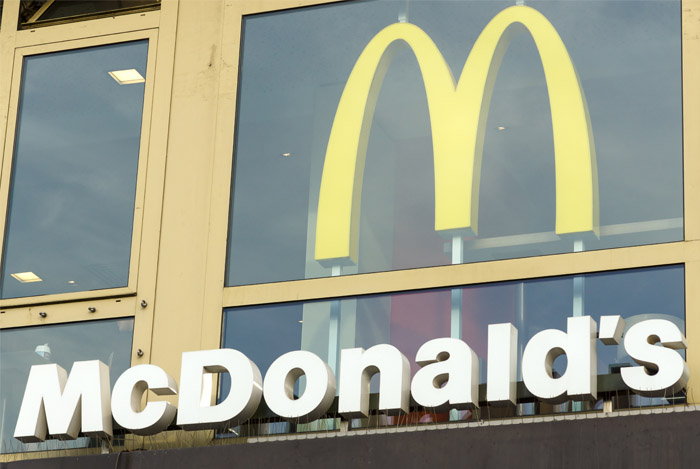
Southwest Salad with Grilled Chicken
The Southwest Salad comes in at 320 calories, with 9 grams total fat, 3 grams of saturated fat, and…960 milligrams of sodium. That’s definitely the biggest downside to fast food salads, the salt content.
After eating fast food be really careful when it comes to salt intake for the rest of your day, and perhaps try limiting your intake for the next few days to make up for it.
Don’t pour on the dressing, either. When you do that, you might as well have just gone for the burger to begin with.
Also, McDonald’s offers plain old side salads on their menu as well, without all the extras of the Southwest Salad. If you got an original, regular burger (no cheese), you’d only have around 250 calories and 520 milligrams of sodium, with a side salad as a substitute for fries for only 15 extra calories.
Subway
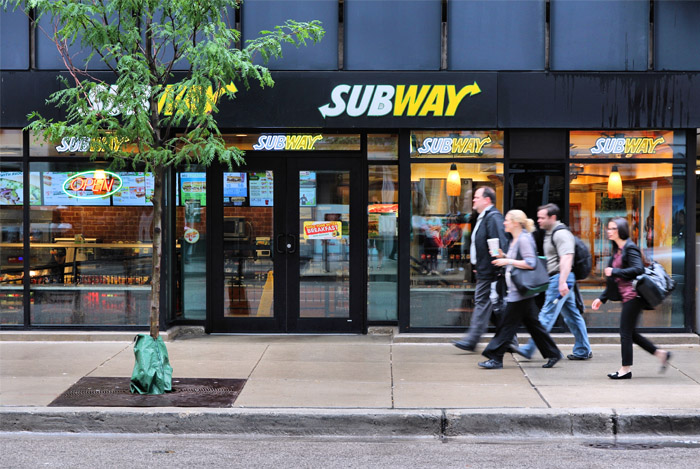
While people have long thought Subway to be one of the healthier fast food options in general, that’s not really the case. Some of their sandwiches can be pretty high in fat and calories, as well as high in sodium.
If you do go to Subway, stick to their healthiest options, I don’t care how cheap their foot-long sandwiches are.
The Double Chicken Chopped Salad comes in at only 220 calories, 36 grams of protein, 4.5 grams total fat, 480 milligrams of sodium, and 4 grams of fiber. An added bonus, you’re also getting 50% of your daily value of vitamin A and vitamin C.
Taco Bell
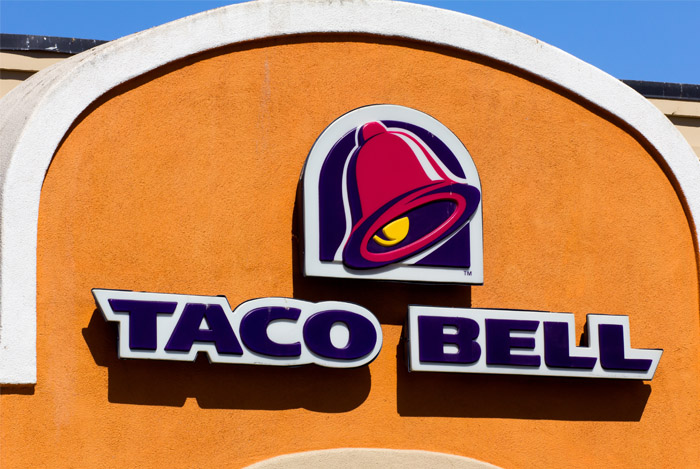
Taco Bell is so convenient. I know when I was in college, I was tempted more than once on a late night to hit up their drive-thru, knowing full well how bad an idea that might have been.
Even the lowest of the low calorie options on the Taco Bell menu still comes packed with salt, so when choosing based on calorie count, still keep in mind that you might end up going overboard on your sodium intake.
The Shredded Chicken Burrito contains 400 calories, 16 grams of protein, 18 grams of fat, 46 grams of carbohydrates including 3 grams of sugar, and a still somewhat manageable 960 milligrams of sodium.
In-N-Out Burger
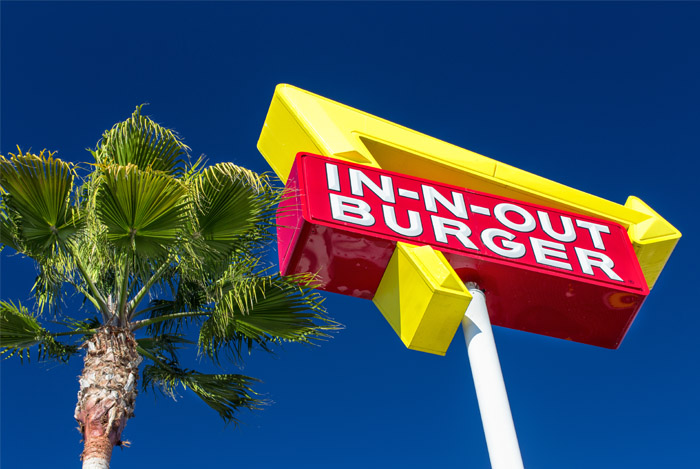
If you live in the West-to-Midwest, you’re likely pretty familiar with In-N-Out Burger, so the Protein Style Cheeseburger is your best bet.
Replacing the bread with a lettuce wrap, this sandwich is undoubtedly the healthiest option on the menu, especially if you’re watching your carbs. Though I would definitely suggest to ditch the processed cheese.
The Protein Style Cheeseburger contains 330 calories, 25 grams of total fat with 9 grams of saturated fat, 720 milligrams of sodium, 18 grams of protein, and 11 total carbs with 7 grams of sugar.
Healthiest Fast Food Restaurants
 While most nutritionists prefer to avoid all fast food restaurants like the plague, every now and then they can actually be impressed by what they find.
While most nutritionists prefer to avoid all fast food restaurants like the plague, every now and then they can actually be impressed by what they find.
Health.com created a list of the top ten healthiest fast food restaurants available. You might just be able to convince the hungry people staring daggers at you, that one of these would be a better alternative to whatever grease-trap they were considering before.
- Panera Bread
- Jason’s Deli
- Au Bon Pain
- Noodles and Company
- Corner Bakery Café
- Chipotle
- Atlanta Bread
- McDonald’s (surprise!)
- Einstein Bros. Bagels
- Taco Del Mar
If you’re riding along the interstate (if you’re driving, please have someone else do this) and have this list open on your phone, open up your GPS and try and find one of these places nearby rather than going to a strictly burgers-and-fries or burrito place.
You might be confused as to why McDonald’s made the list. They say they included them because they’re now “leading the way in overhauling [their] menu to offer more heart and waist friendly fare”.
Not only will your fellow passengers be able to find something they like on the menus in these places, you’ll be able to find the perfect, healthy meal for you as well.
Fast food places are so common because well, they’re fast, as well as being cheap and convenient. It really is a bummer that they don’t put a higher premium on supplying the healthiest food imaginable for your dollar, but that’s not really what the average American wants, is it?
And you might have fallen prey to fast food a lot in the past. Especially when you’ve been traveling or on a budget. Hopefully now you will be more aware of the perils of fast food restaurants while being simultaneously more prepared to take on the next one you’re forced inside of, likely against your will.
Just think: if people start asking for the more nutritious offerings on their menus, the fast food industry might just decide to incorporate even healthier foods. It sounds like a pipe dream, but it wasn’t until November of 2014 that the FDA required fast food chains provide their nutritional information.
Change is happening as consumers become more aware, but we all have to wise up to what we’re doing to our bodies when we eat these foods.
At the end of the day, regardless of whether society changes or not, at least now you’ll be able to make healthier choices when you order fast food.
What is your go-to healthy fast food item? Share in the comments below!
The post What Fast Food Would a Nutritionist Eat? appeared first on Nutrition Secrets.
http://www.nutritionsecrets.com/fast-food-nutritionist-eat/
No comments:
Post a Comment